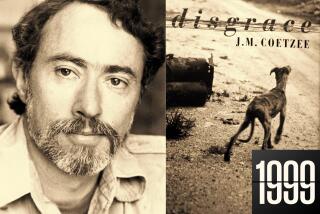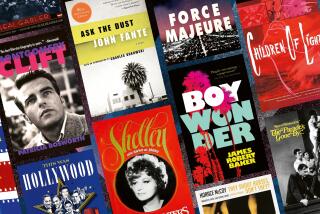Laurence Olivier detailed, to the letter
The title of the book begins on the back cover with the bold red letters: O L I. On the spine: V. The front cover continues with I E R, under a photo of a brooding, young Laurence Olivier. The ostentatious look of a new, authorized biography of a man considered to be one of the greatest actors of the 20th century seems fitting. In theater, films and television, Olivier commanded the stage and screen in everything from âHamletâ to âThe Prince and the Showgirlâ with Marilyn Monroe.
âOlivierâ is the result of four years of scholarship by Terry Coleman, an English journalist, novelist and historian who had two advantages over other biographers of the actor: He interviewed Olivier many times as a correspondent for the Guardian of London and had access to Olivierâs collection of letters and memorabilia.
âOlivier in his last years kept all his papers in great big stage hampers in a barn at his country place in Sussex,â Coleman said from his London home. âHe was a bit dismissive about them, and at one point he said, âGet the gardener to burn them.â â
The gardener didnât burn them, but after Olivierâs death, the papers were forgotten and subject to the damp English winters. After five years, the family realized the value of the collection, which was then entrusted to the British Library. The estateâs executors chose Coleman to write the official Olivier biography. They were impressed by âThe Nelson Touch,â Colemanâs biography of British naval hero, Adm. Horatio Nelson who Olivier had portrayed in âThat Hamilton Womanâ with the actorâs future wife, Vivien Leigh, in the title role.
The romance of Olivier and Leigh was widely publicized, especially since both were married to others. They obtained divorces and married in 1940; the marriage lasted 20 years.
Starting in his late 20s, Olivier kept the letters written to him and made carbon copies of his replies. When directing the London debut of âA Streetcar Named Desire,â Olivier realized the play was too American for British audiences. He sent a 32-page handwritten letter to Tennessee Williams suggesting changes. The astonished playwright authorized the revisions.
Coleman devotes a seven-page authorâs note at the end to âThe Androgynous Actor.â He considered various reports that Olivier was bisexual. One biography printed after his death alleged that Olivier âwas deeply involved in a homosexual affair with Danny Kaye.â
âThis sort of thing is very difficult to check,â Coleman said. âI did check it and talked to a number of people. In this mountain of material in the archives I could not find a hint of an affair with Danny Kaye.... What I did find was evidence of a homosexual affair in 1937 with an actor called Henry Ainley.... Iâm not sure this is a terribly important thing. Itâs there and itâs a fact, and therefore I report it.â The author declared he found no other evidence of bisexuality.
More to Read
Sign up for our Book Club newsletter
Get the latest news, events and more from the Los Angeles Times Book Club, and help us get L.A. reading and talking.
You may occasionally receive promotional content from the Los Angeles Times.








